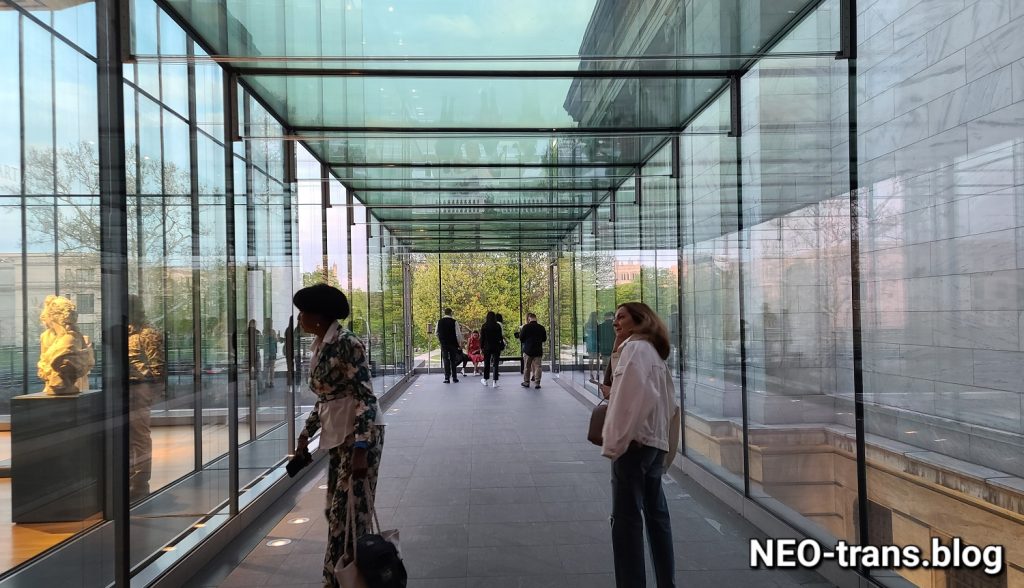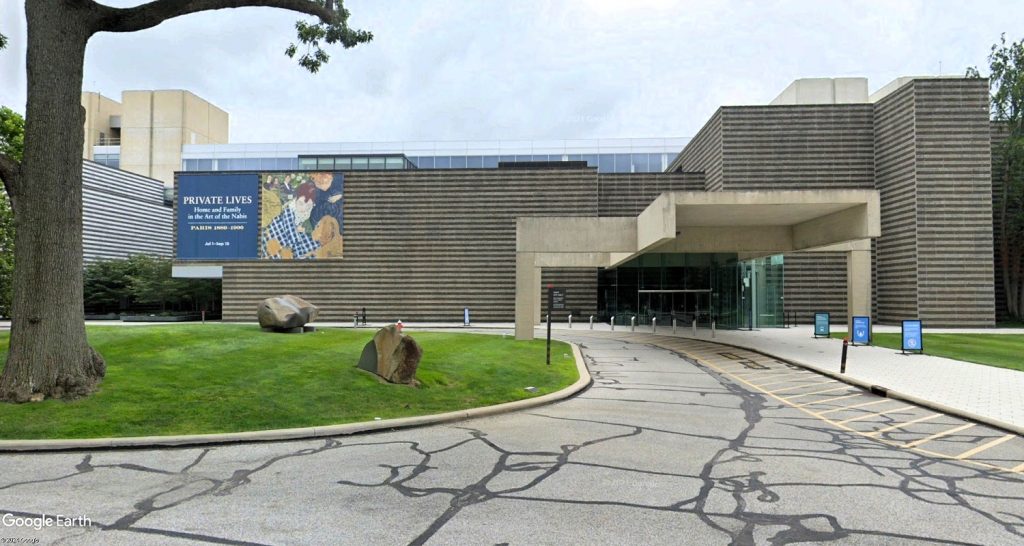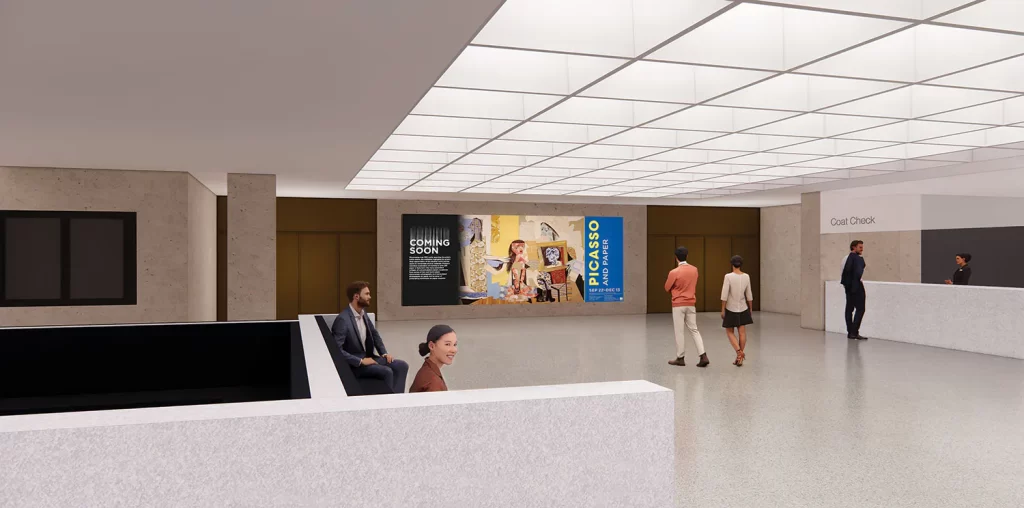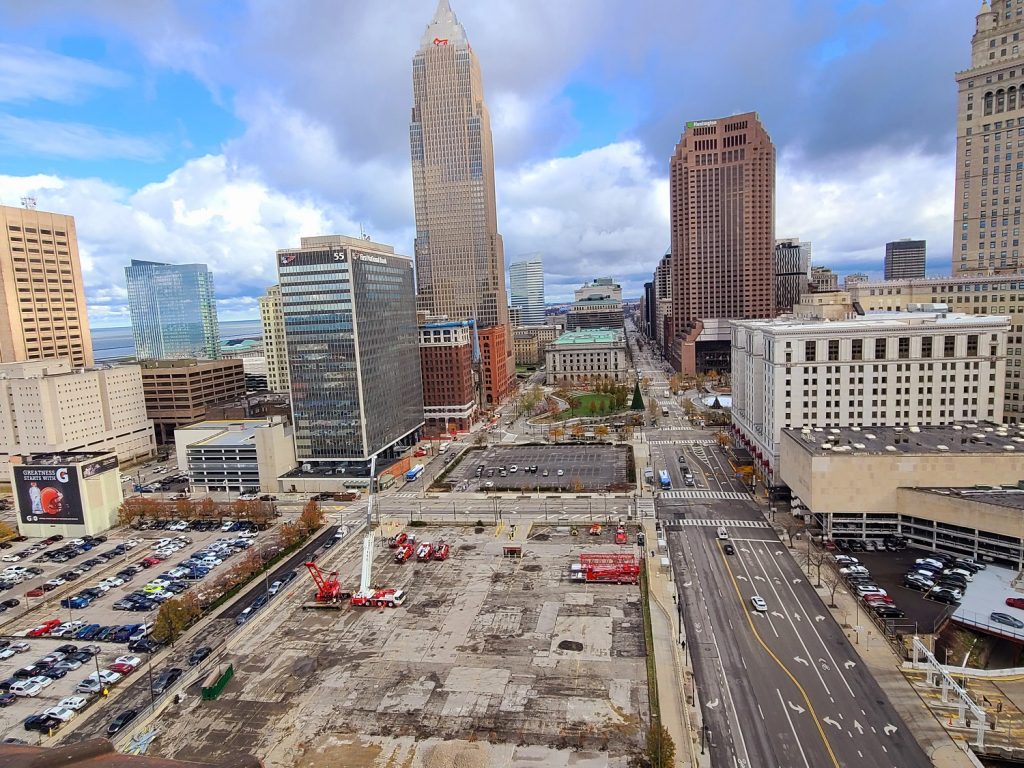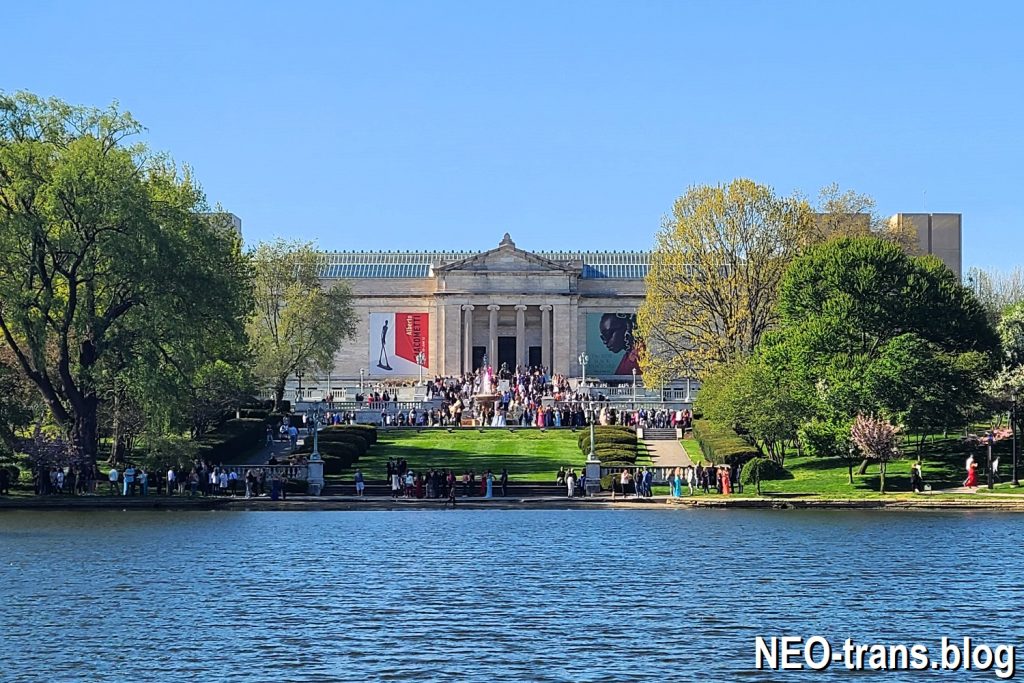
After a $320 million renovation and expansion that concluded in 2013, the Cleveland Museum of Art is more popular than ever. But that has led to overcrowding in its three lobbies. Those will be renovated from May to October to allow for a more efficient movement of crowds, tour groups and special event registrations (Iryna Tkachenko). CLICK IMAGES TO ENLARGE THEM.
All of the museum’s lobbies to be enhanced

Increasingly crowded with students, tour groups and attendees of special events, three lobbies at Cleveland Museum of Art (CMA) are about to be renovated thanks to $8 million worth of donations. Those gifts will help make those gathering locations in one of Cleveland’s most popular museums a place to enjoy rather than deal with.
Construction work is due to start May 1, according to a statement from the museum. During the renovations, which are due to continue until the end of October, the museum and all of its exhibitions and galleries will remain open. But some entrances and accessways will be temporarily closed. Ingall’s Library, café and store will be unaffected.
To be renovated are the Horace Kelley Art Foundation North Lobby and the Susan M. Kaesgen Education Gallery and Lobby, the museum’s main entrance on East Boulevard and the lobby area of the museum’s lower level.
“As the museum continues to welcome more visitors and students, the need to update the lobby has become increasingly important,” said William Griswold, CMA director and president, in a written statement. “These new spaces will make the museum more accessible, wayfinding more informative, the visitor experience more friendly, and the space more efficient.”
An element of a larger plan
Between 2005 and 2013, the CMA doubled its exhibition space and created opportunities for new programming and larger exhibitions with a $320 million expansion. That project also unveiled the Ames Family Atrium, the soaring, glass-enclosed space designed by Rafael Viñoly, which has become the visual and spatial heart of the museum.
While that construction transformed much of the museum, the lobby entrances designed by influential Hungarian American architect Marcel Breuer were left largely untouched. Since completing the expansion, however, museum attendees and school group visits have grown exponentially.
As a result, these groups are often competing for space at peak times, congesting the lobbies and impacting the visitor experience. With these renovations, the CMA will optimize the entrances, taking into account altered visitor patterns. The changes also provide the opportunity to update infrastructure and technology and install energy-efficient lighting to brighten the area.
“There are two important guiding principles for the lobby renovation,” said Griswold. “The first is to respect and preserve Breuer’s historic, architecturally significant design. The second is to address the needs of our guests. With this project, the CMA looks to the future, while staying true to and respecting the past.”
All exhibitions and galleries remain open
The new renovations will make the visitor experience more friendly and easier to navigate and provide updated accommodation for large groups. They will also create opportunities for students and other visitors to engage with the museum’s Education Art Collection and enable the CMA to develop student- and community-curated exhibitions. All of this will help the CMA to realize an important ambition articulated in its strategic plan: to welcome 100,000 pre-K through grade-12 students annually.
During construction, visitors will enter the CMA through the Beverly Stadler Harris North Courtyard and Parker Hannifin Corporation Donor Lobby via a covered walkway. Until August 1, visitors can access Ingall’s Library through gallery 235. From August through October patrons will have access to the Breuer elevators.
During the renovation period, performances, lectures, or events that would normally take place in the Gartner Auditorium will be hosted in other spaces within the museum, and at other CMA venues such as Transformer Station, the Community Arts Center, or partner organizations. While Gartner Auditorium is closed, the CMA’s lunchtime lecture series will be hosted virtually.
The CMA will also expand its schedule of City Stages concerts at Transformer Station and add other programming at Transformer Station and its Community Arts Center facilities on Cleveland’s west side. The CMA will also add a June MIX event to the calendar. The museum’s annual Solstice event will take a pause in 2024, returning in 2025.
Horace Kelly Art Foundation North Lobby
In the Horace Kelly Art Foundation North Lobby, a large digital wayfinding display will replace the current ticketing desk. The display will provide visitors with a prominent, easy-to-read guide to daily tours, art rotations, new exhibitions, and other programs and information related to their experience at the CMA.
Additional enhancements in the upper lobby include new LED lighting, reconfiguration of the coat check, modification of the pavement at the entrance to create less slippery and safer surfaces, and streamlined security systems.
The project will extend to the concourse that leads from the Horace Kelley Art Foundation North Lobby to the Ames Family Atrium with a new art installation that will welcome visitors and help transition them from the world of the everyday to the world of one of the most significant art collections in the world. A new service area will be created in the atrium where visitors can book tours, ask questions, and address other service items.
Susan M. Kaesgen Education Gallery and Lobby
The Susan M. Kaesgen Education Gallery and Lobby will be reconfigured as a welcoming center for school groups and other large tours, complete with a dedicated reception area and coat check. Specially designed vitrines will be created to showcase student- and community-curated exhibitions of the CMA’s Education Art Collection.
The Education Art Collection comprises some 10,000 cultural heritage objects from around the globe and spans 5,000 years of artmaking. Originally founded in 1914 to spread awareness of the visual arts and the newly opened Cleveland Museum of Art, it is now used for innovative educational programming.
The new areas of the Kaesgen Education Gallery and Lobby will create space for students to learn through multisensory experiences with art. The updates build on a long-standing CMA tradition and facilitate deeper engagement with students and visitors. The lower level will also be reconfigured to reverse some changes that were made over time, remove walls to add space, and restore the area to its original size and floor plan.
Visitor favorites including the beloved wishing well, the Turtle Baby sculpture by Edith Barretto Stevens Parsons, and Looking Along Broadway Toward Grace Church by Red Grooms will remain on view in the newly renovated space.
“With this project, the CMA will continue to advance our goals for the visitor experience laid out in our strategic plan, ‘For the Benefit of All the People,’” said Griswold. “The renovations are another step in the process and one that will truly benefit all visitors.”
Funding for this capital project was spearheaded by board chair Ellen Stirn Mavec, through a leadership challenge gift from The Kelvin and Eleanor Smith Foundation. The Chair’s Challenge for the lobby renovation was met with principal support from The Kelvin and Eleanor Smith Foundation and Jon and Jane Outcalt, with major support provided by James and Susan Ratner and the Sauerland Foundation.
The museum also received principal support from the State of Ohio capital budget. Dieter and Susan M. Kaesgen and the Womens Council of the Cleveland Museum of Art were also contributors to the renovation project.
END

